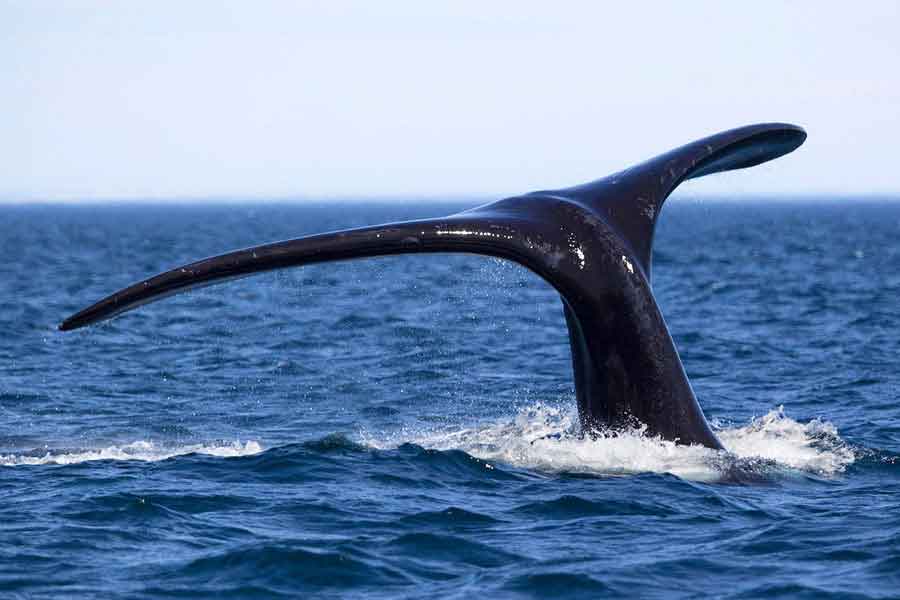
If we take into account that water absorbs heat 25 times faster than air (in fact, we use water to cool our engines), we will come to the conclusion that whales, being warm-blooded mammals that feed in the Antarctic, must have a truly efficient thermal protection.
To prevent heat loss, the bodies of whales are wrapped in a thick layer of subcutaneous fat, which provides excellent insulation. Additionally, the blood circulation at the skin level is very poor, further reducing heat loss. It could be said, then, that whales are truly isolated and protected from heat loss even in the icy environment where they are often found.
However, a great thermal insulation also presents another serious problem. When the animal needs to exert a violent physical effort, such as the typical jumps out of the water, the activity of its muscles generates a large amount of heat that the organism needs to dissipate to avoid overheating. The solution used by whales is extremely ingenious. The whale’s tail has a much lower insulating covering than the rest of the body and a controllable blood circulation system.
If the animal needs to lose body heat, circulation becomes very intense on the surface of the caudal fin, quickly cooling down the blood that flows through it. But if the animal is still and calm, circulation in this area is minimal. When southern right whales migrate from Antarctica to warmer waters in the north to give birth to their calves, they encounter this problem once again. It is common to see them for extended periods with their bodies in a vertical position, their tails exposed to the wind, which is colder than the surrounding water.
Whales use their tails as a gigantic radiator that allows them to thermoregulate. African elephants do the same with their large ears, which they also use as regulators of thermal homeostasis. They are not the only things they have in common; whales and elephants share so many similarities in their ways of life that one could speculate about a shared evolutionary branch.
Elephants and whales, so distant yet so united, so far away and yet so close, so connected on the path of life. With so much in common and so much to lose. These gentle giants are pursued and threatened, cornered in their ever-shrinking habitats, surrounded by civilization that grows inexorably. A world without whales and elephants would not be the same world; humans would walk on the beaches, drowning in the loneliness of guilt. If we cannot save these gentle giants, there is nothing in this world that can be saved by us.
«You cannot defend what you do not love, and you cannot love what you do not know.»

